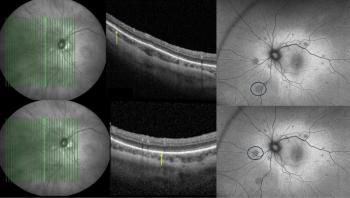
Eye diseases in pre-school children more common than first thought
In what is believed to be the first comprehensive eye disease study among urban pre-schoolers, investigators writing in the April issue of the journal Ophthalmology report that while vision problems are rare, they are more common than once thought.
In what is believed to be the first comprehensive eye disease study among urban pre-schoolers, investigators writing in the April issue of the journal Ophthalmology report that while vision problems are rare, they are more common than once thought. Findings also revealed that a small group of children with easily treatable visions problems go untreated, while others get treatments they don't need.
Researchers from the Johns Hopkins Children's Centre and the Johns Hopkins Bloomberg School of Public Health say 5% of the nearly 2,300 children who were followed in the study, had refractive errors - a defect in the eye's ability to focus light-significant enough to require treatment, but only 1% were actually treated. Among 29 children who had a prescription for glasses before entering the study, more than one-third didn't need glasses.
Undetected and untreated, refractive errors can cause loss of visual acuity and eventually lead to amblyopia and strabismus, which are hard or impossible to reverse after the age of seven.
In the study, more than half of the 1,268 black children (55%) had some refractive errors as did half (51%) of the 1,030 white children. Because overall, one in 20 children studied had a problem that is easily treated, the researchers suggest that paediatricians screen routinely during medicals and parents should insist on screening by the age of four.
"The good news is that serious eye disease in preschoolers appears to be uncommon, but the bad news is that we're missing kids who need treatment and treating some children who don't need it," says investigator Michael Repka, MD, deputy director of ophthalmology at Hopkins Children's Centre.
A surprising additional finding in the report is that contrary to previous research suggesting that most infants will outgrow their farsightedness in the first few years of life, few children in the Baltimore study did outgrow it during their preschool years, making early diagnosis and treatment critical, says lead investigator David Friedman, MD of the Johns Hopkins School of Medicine and the Bloomberg School of Public Health.
Hyperopia was the most common abnormality, occurring more often in white children (40% of 1,030) than in black children (31% of 1,268).
Anisometropia, a condition marked by a difference in vision between the two eyes, was more common in black children (18%) than in white children (11%). Black children also had more nearsightedness (6%) compared to 0% among white children.
Only 3% of all children in the study had severe farsightedness, while only 0.6% had severe near-sightedness. Other findings included only 1% of black children and 1.5% of white children had a difference in vision between the two eyes (anisometropia) that required treatment and fewer than 3% of children had serious astigmatism.
The research was funded by the National Eye Institute.
Newsletter
Get the essential updates shaping the future of pharma manufacturing and compliance—subscribe today to Pharmaceutical Technology and never miss a breakthrough.













































